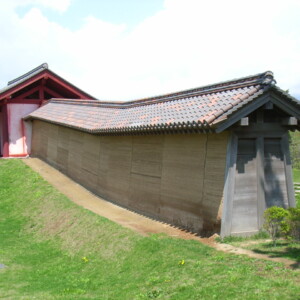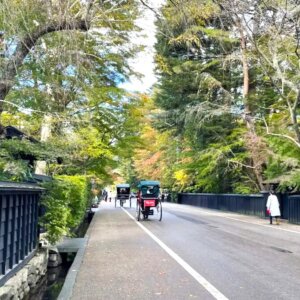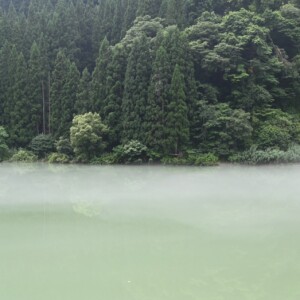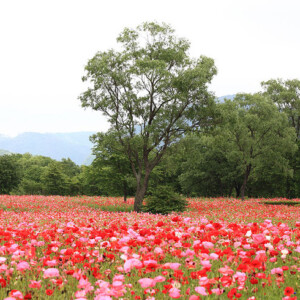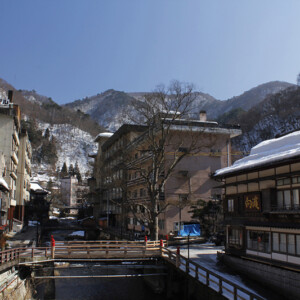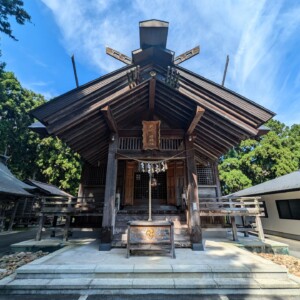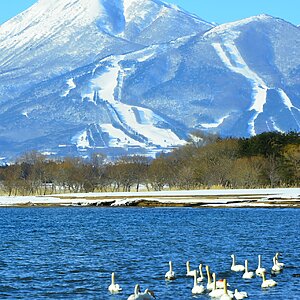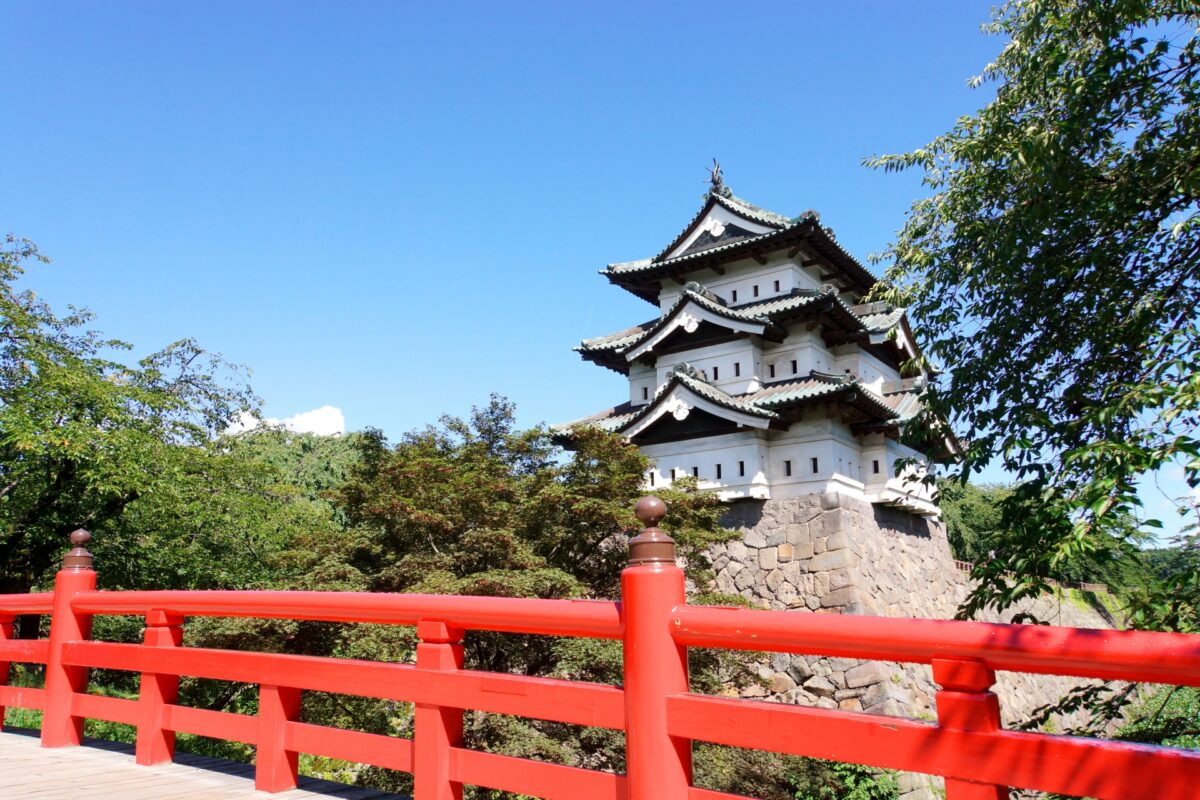
The pride of the six Tohoku prefectures: "The cherry blossoms and castle tower are the most beautiful in Tohoku!" Hirosaki Castle (Hirosaki City, Aomori Prefecture) retains its original appearance
table of contents
- 1 Hirosaki Castle (Hirosaki City: National Historic Site, Important Cultural Property, One of Japan's 100 Great Castles)
- 2 The first castle tower was destroyed in a huge explosion
- 3 The second castle tower was built with consideration for the shogunate
- 4 Hirosaki Castle is a treasure trove of important cultural properties, with many buildings from the Edo period remaining.
- 5 Considering the layout of Hirosaki Castle
- 6 summary
- 7 Tohoku 6 Prefecture Castles Series
" Takaoka Castle " or " Takaoka Castle ," the castle was built during the Edo period and was not damaged during the Boshin War or the Pacific War, with the castle tower and turrets remaining intact.
In addition, Hirosaki Castle has many remains from when it was first built, and its territory still remains intact, making it an extremely rare and valuable castle even on a national scale.
In addition, the term "nawabari" in the context of a castle does not refer to the "territory" of an animal or anti-social forces, but rather to the overall design of the castle (the layout of the moats, stone walls, earthen ramparts, moats, and trenches).
Hirosaki Castle (Hirosaki City: National Historic Site, Important Cultural Property, One of Japan's 100 Great Castles)
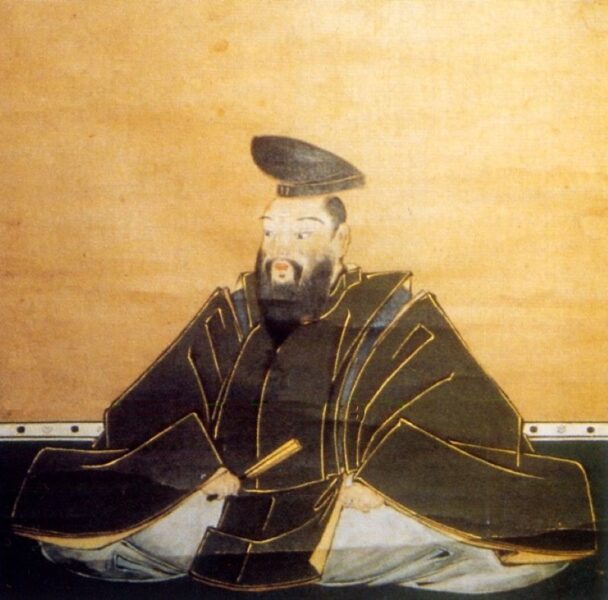
Hirosaki Castle, the political center of the Tsugaru domain with a stipend of 47,000 koku, dates back to when Oura Tamenobu, a vassal of the Nanbu clan, gained control of the Tsugaru region through a coup (there are various theories), and later claimed to be a member of the Tsugaru clan, founded the Hirosaki domain, and planned to build a new castle in Takaoka (Takaoka).
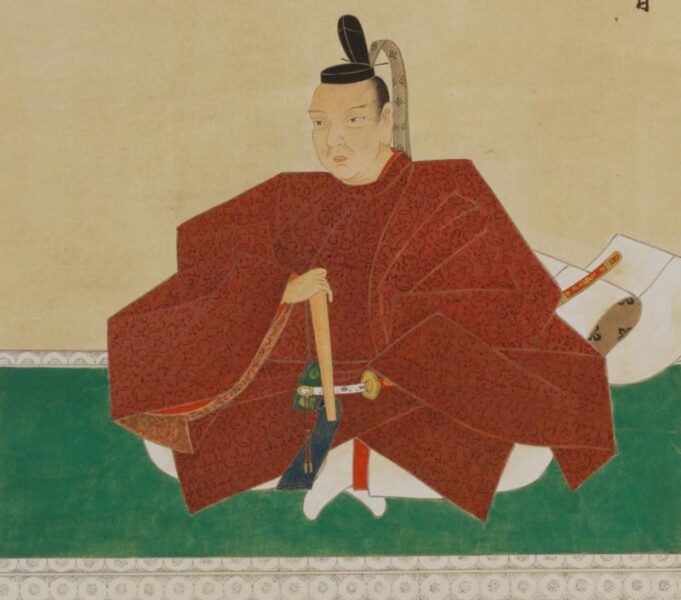
However, construction of the castle did not progress, and after Narinobu's death, the second head of the Tsugaru clan, Tsugaru Nobuhira (some say Nobumaki), built a new castle with a five-story main tower and developed the castle town.
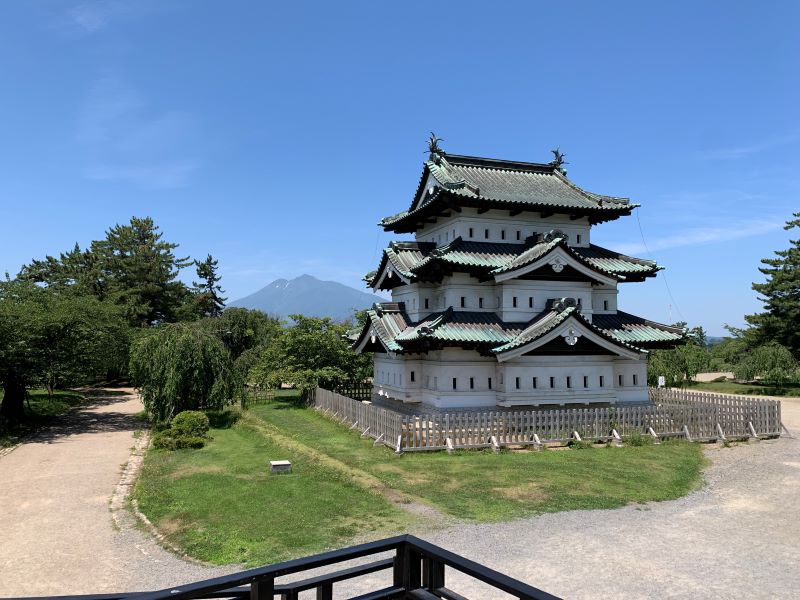
The five-story main tower was extraordinary for a castle belonging to a small feudal lord with a kokudaka of 47,000 koku, and one theory is that this was done in consideration of the shogunate's decision to assign Nobuhira the role of inspector over the outside feudal lords of the Tohoku region.
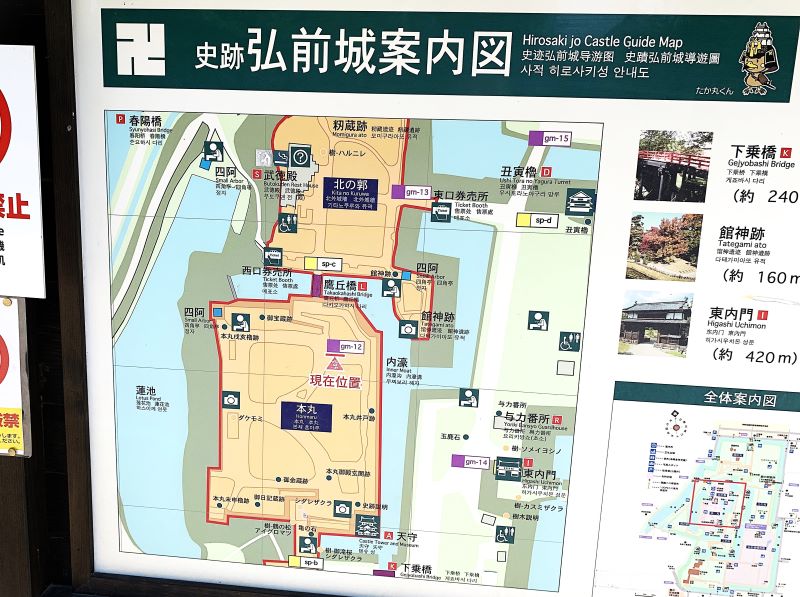
The first castle tower was destroyed in a huge explosion

In 1627 (Kan'ei 4), Takaoka Castle was struck by lightning, causing a fire that ignited the gunpowder storehouse in the castle tower, resulting in a huge explosion that destroyed the five-story castle tower, the turrets connected to it, and the Honmaru Palace.
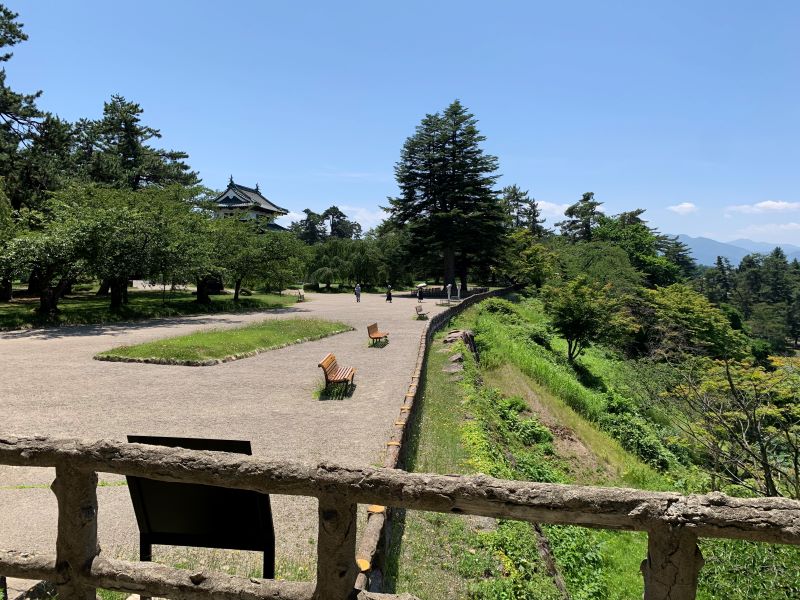
There were rumors that the explosion of the castle tower was caused by a vengeful spirit, so the name of the place was changed to "Hirosaki" by Tenkai, a high-ranking monk in the shogunate at the time, who took the name from the Tendai esoteric Buddhism mantra "Kuji no Ho" (Nine Character Law), as a way to ward off evil spirits.
The second castle tower was built with consideration for the shogunate
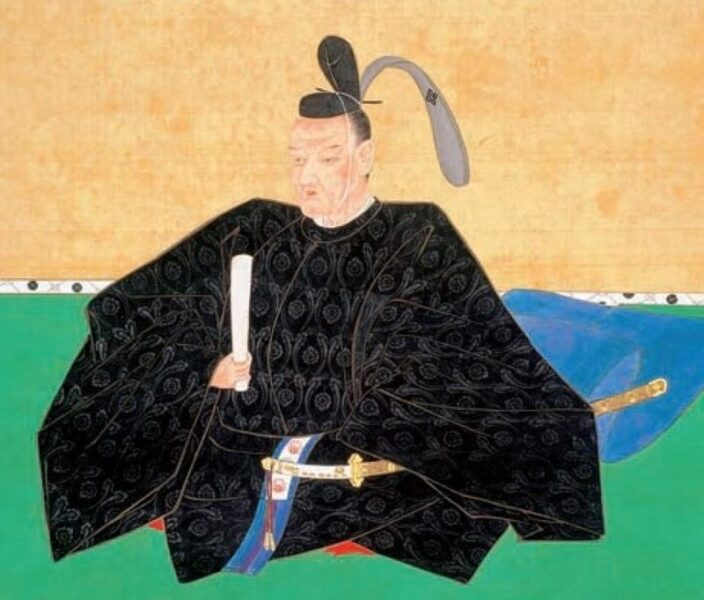
Hirosaki Castle, which remained under the control of the Tsugaru clan until the Meiji period, was without a castle tower for about 200 years after the first castle tower was burned down. However, during the reign of the ninth feudal lord, Tsugaru Yasuchika, the castle was given a formal kokudaka of 100,000 koku in recognition of his achievements (or rather, his hardships) in guarding Ezo, and permission was granted to rebuild the castle tower.
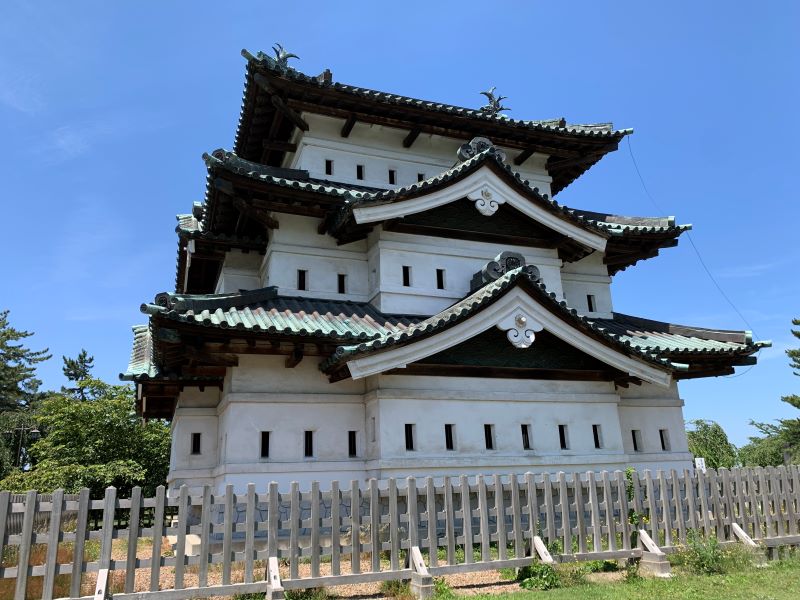
Yasuchika rebuilt the corner tower to the southeast of the main castle, and built a three-story, de facto castle tower there, which would remain in its original form as one of Japan's 12 surviving castle towers.
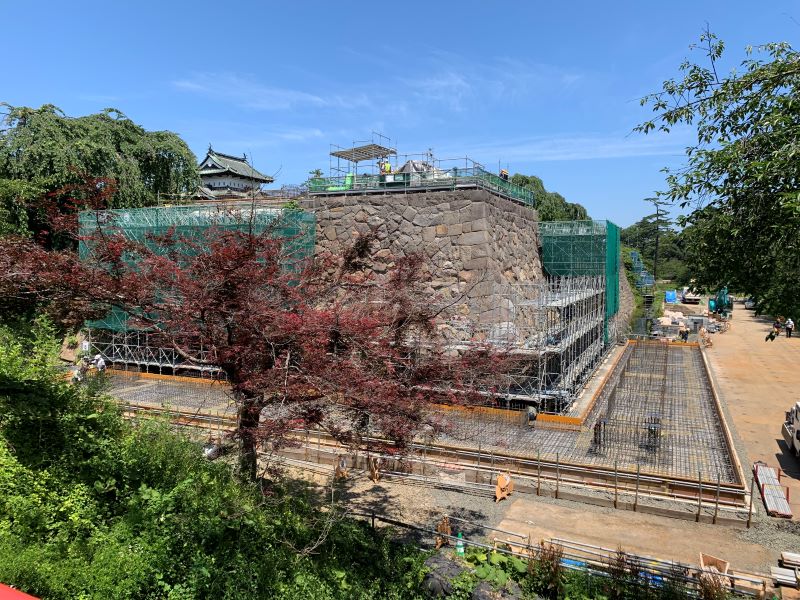
This castle tower the 12 remaining castle towers and the only one located east of the Kanto region.Due to the swelling of the stone walls that form its base, it was moved in 2016 (Heisei 28) and restoration work on the stone walls is currently underway.
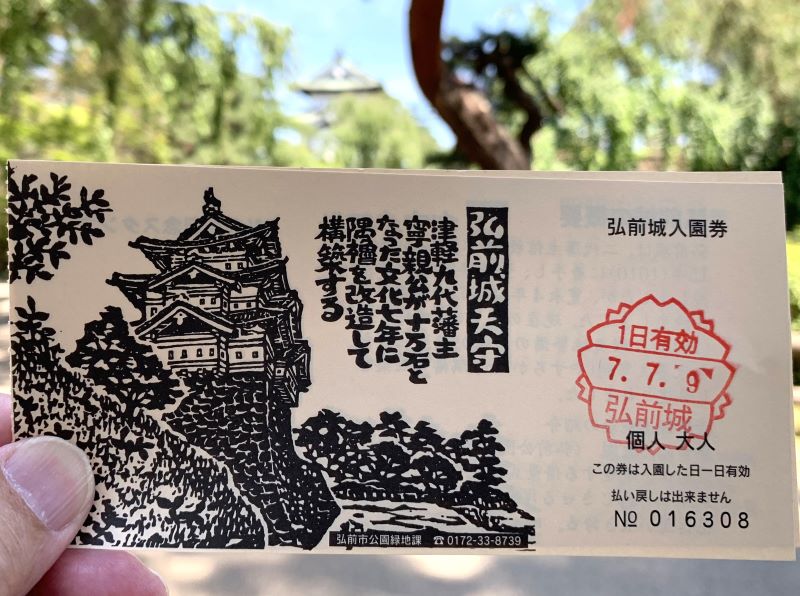
Incidentally, when Yasuchika was the lord of the domain, the "Soma Daisaku Incident," known as a terrorist attack on Yasuchika, occurred, carried out by members of the Nanbu clan of the Morioka domain who were unhappy with the reversal of their family status.
Hirosaki Castle is a treasure trove of important cultural properties, with many buildings from the Edo period remaining.
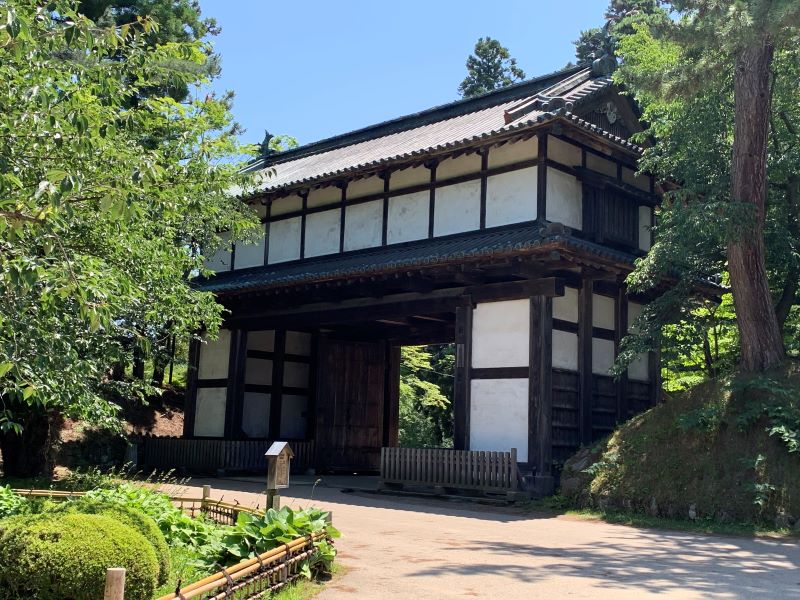
There are three corner towers and five gates remaining in the Ninomaru and Sannomaru areas, each of which retains its original appearance from the time of construction and has been designated as an Important Cultural Property of Japan.
Turrets (all three-story corner turrets in the Ninomaru): Tatsumi Turret, Ushitora Turret, and Mishin Turret
Gates: Sannomaru Ote Gate, Sannomaru East Gate, Ninomaru South Gate, Ninomaru East Gate, North Bailey North Gate (Kikkomon Gate)
Considering the layout of Hirosaki Castle
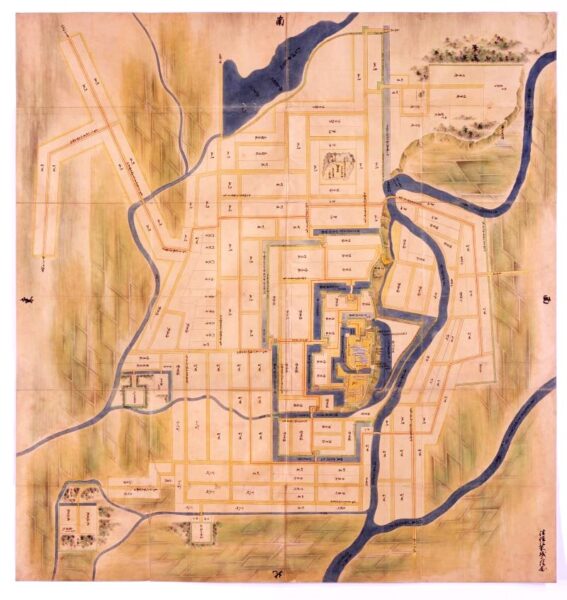
The layout, which treats the Iwaki River as part of the moat, is called the " teikaku -shiki" style, which runs north to south and makes use of the natural topography. Other castles in Japan that use this type of layout include Okayama Castle, Hiroshima Castle, and Kumamoto Castle.
When the main castle is adjacent to a river or valley, the Ninomaru is built to surround it on two or three sides, which is called the "Teikaku style" and is a style of castle that is excellent for defense.
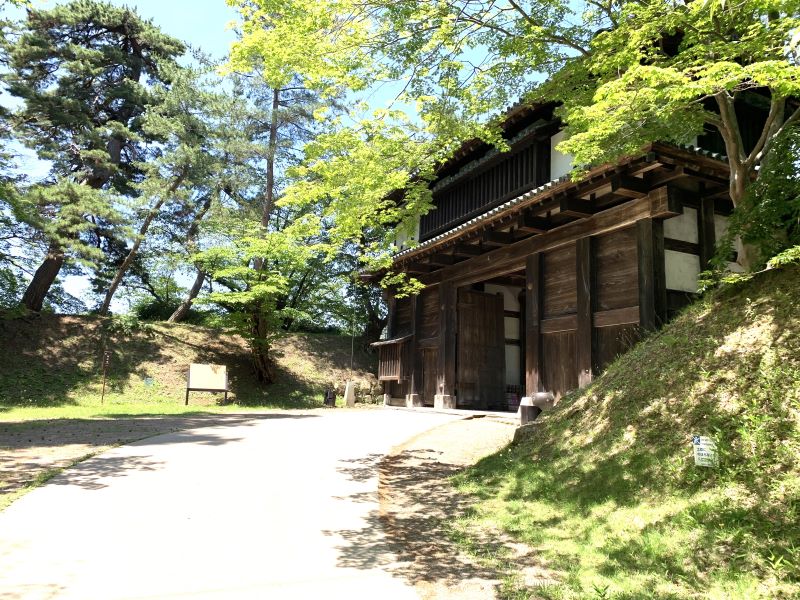
Furthermore, Hirosaki Castle only has stone walls around the main enclosure and gate, and the castle is mainly made up of earthworks, which are impressive and well-built, and can be seen everywhere.
The west side utilizes the Iwaki River as a natural fortress
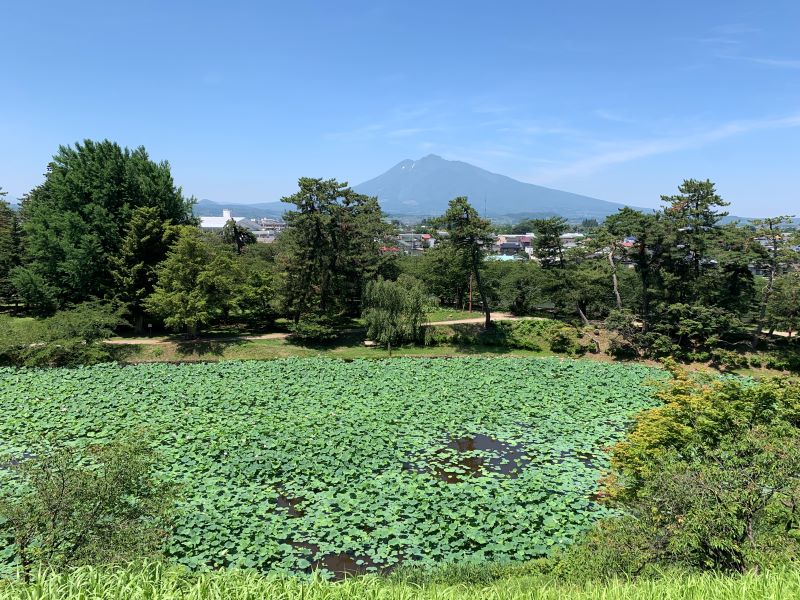
There are two moats on the west side of the main castle, the Hasuike Moat and the Nishi Moat. The Hasuike Moat was built at the foot of the cliff on the river terrace of the Iwaki River, which flows west of the castle, so the difference in elevation between it and the main castle on the cliff is 17 meters.
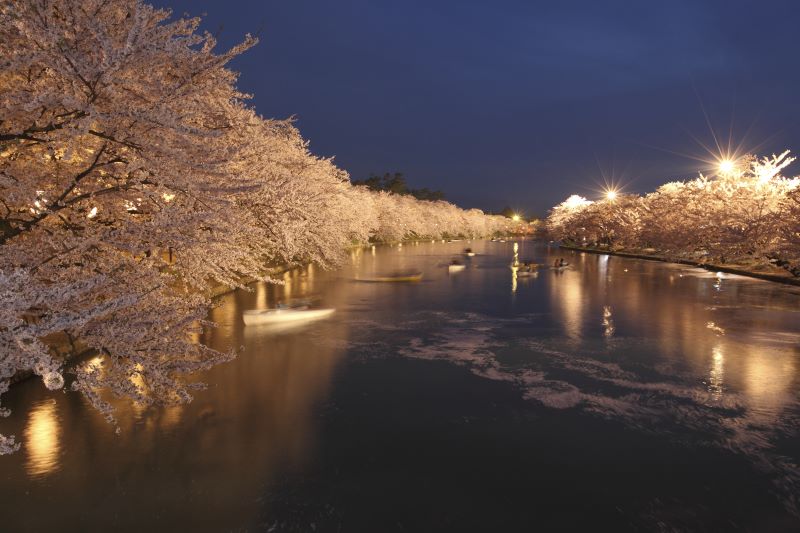
The Western Moat, which is now a famous cherry blossom viewing spot where people can enjoy boating during the Cherry Blossom Festival, was connected to a tributary of the Iwaki River when the castle was built and functioned as an outer moat, with the area between the two moats being the Western Bailey.
The east and south sides are well protected by the Ninomaru and Sannomaru
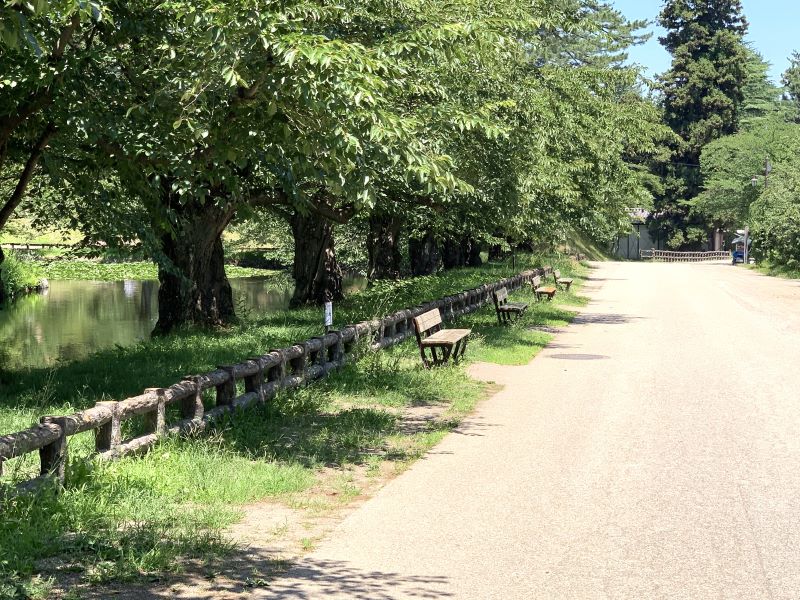
The east and south are protected by the Ninomaru, and beyond that, across the Nakabori, lies the vast Sannomaru and Outer Moat, which are now home to the Hirosaki Castle Botanical Garden, Civic Hall, and City Museum.
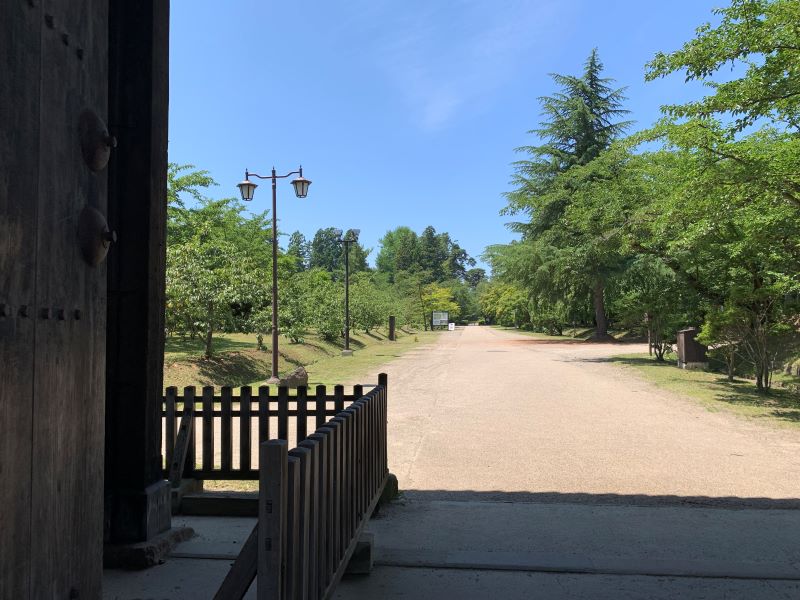
During a siege, it was necessary to concentrate castle soldiers here to attract the attacking forces and then annihilate them.
The northern defenses were the northern enclosure and the north gate (Kame-no-komon), which was formerly the Otemon gate.

The north side of the Honmaru is protected by the Kita no Kuruwai and, outside of that, the Yon no Maru, which is surrounded by the Sotobori (Outer Moat), which is now home to the Gokoku Shrine and a recreational area.
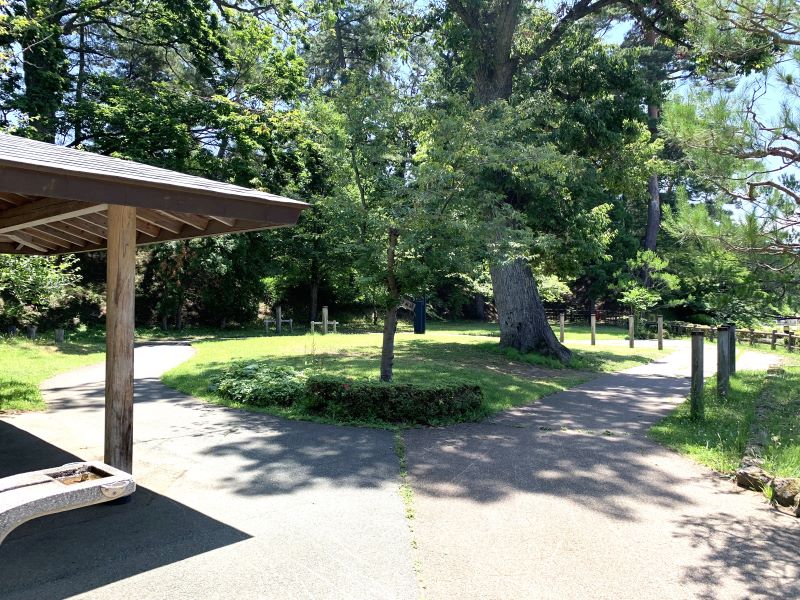
Excavations of the "Northern Bailey" have revealed the remains of a "Tategami" (a sacred building) where a wooden statue of Toyotomi Hideyoshi was enshrined as a sacred object, as well as the remains of a "Momigura" (rice grain storehouse), and it is believed to have been the second most important bailey after the Honmaru (main castle).

When the castle was first built, the north gate in the "Fourth Bailey" was the Ote-mon gate, which was the "main entrance," but it was later moved to the south, and the north gate became the back gate.
Hirosaki Castle (Hirosaki Park) <Information>
- Facility name: Hirosaki Castle (Hirosaki Park)
- Location: 1 Shimoshiroganecho, Hirosaki City, Aomori Prefecture
- Phone number: 0172-33-8739
- Opening hours: Honmaru and Kitanokaku (April 1st to November 23rd) 9:00-17:00 (Please check the official website during the Sakura Festival)
- Opening hours: Honmaru and Kitanokaku (November 24th to March 31st) 24 hours (free admission, but the castle tower is closed)
- URL: Hirosaki Park official website
Google Map
summary
The Hirosaki Castle ruins, including the Hirosaki Botanical Garden and tennis courts, are collectively known as "Hirosaki Park." Every year from late April to early May, the 2,600 cherry trees of around 50 different species, including Somei Yoshino and weeping cherry trees, planted throughout the castle grounds, come into full bloom, making it one of the most famous cherry blossom viewing spots in the Tohoku region.
Hirosaki Park has been selected as one of the "Three Great Cherry Blossom Spots in Japan" and "One of the Top 100 Cherry Blossom Spots in Japan," and every year during Golden Week, the park hosts a Cherry Blossom Festival, attracting many tourists from all over the country.



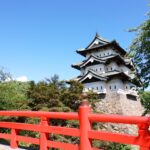




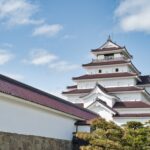

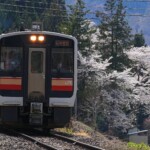
![The pride of the six Tohoku prefectures: "Constructed in peacetime, yet with a sturdy structure!" Kubota Castle, located in a prime location in front of the station [Akita City, Akita Prefecture] Akita Catch](https://jp.neft.asia/wp-content/uploads/2025/08/979a38324ff45520e274bdc0cee6df5e-150x150.jpg)
![[Fukushima] Enjoy Lake Inawashiro, the 4th largest lake in Japan! swan](https://jp.neft.asia/wp-content/uploads/2016/11/7ee5a3fc98dc32fed91ea0cec8b3362b_m-150x150.jpg)

![The history of Kamiyama, which developed as a castle town and post town with hot springs [Kamiyama City, Yamagata Prefecture] Kaminoyama Castle](https://jp.neft.asia/wp-content/uploads/2023/08/22726859_m-150x150.jpg)
![[Tome City, Miyagi Prefecture] A mysterious forest with a 1,000-year history and the belief in Hachiman to ward off evil | Kaminuma Hachiman Shrine IMG_2749](https://jp.neft.asia/wp-content/uploads/2023/08/IMG_2749-150x150.jpeg)
![[Series 1: The role of the previous nine years and the role of the later three years] Why did the Ou War at the end of the Heian period take place? Shiba Castle Ancient Park](https://jp.neft.asia/wp-content/uploads/2023/11/6e4e9113cd864c9d5892db200df1ec1c-150x150.jpg)


